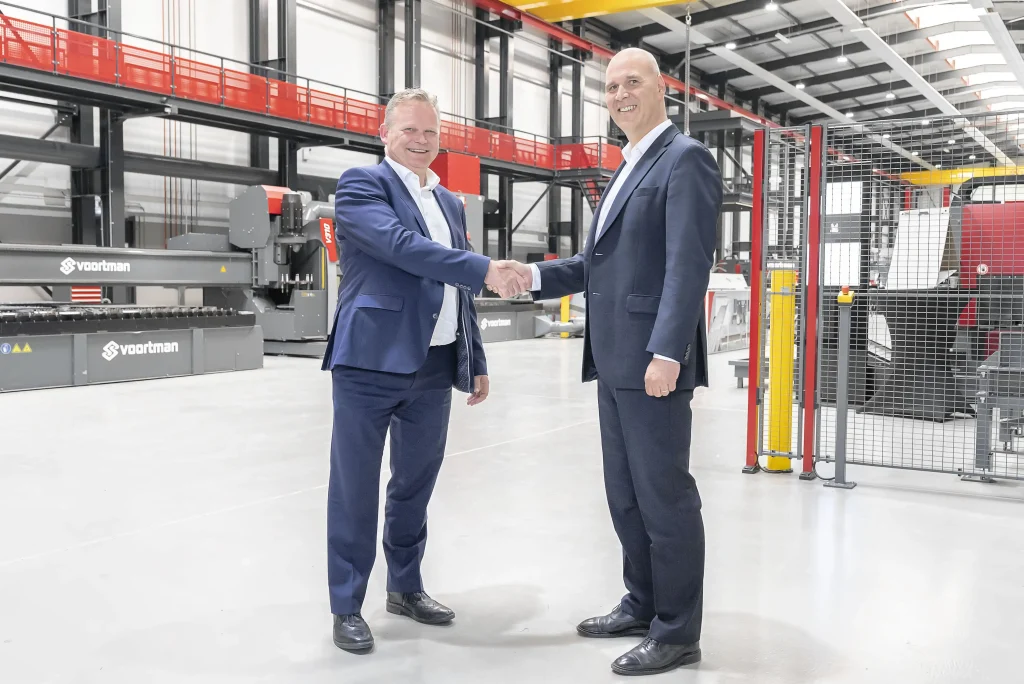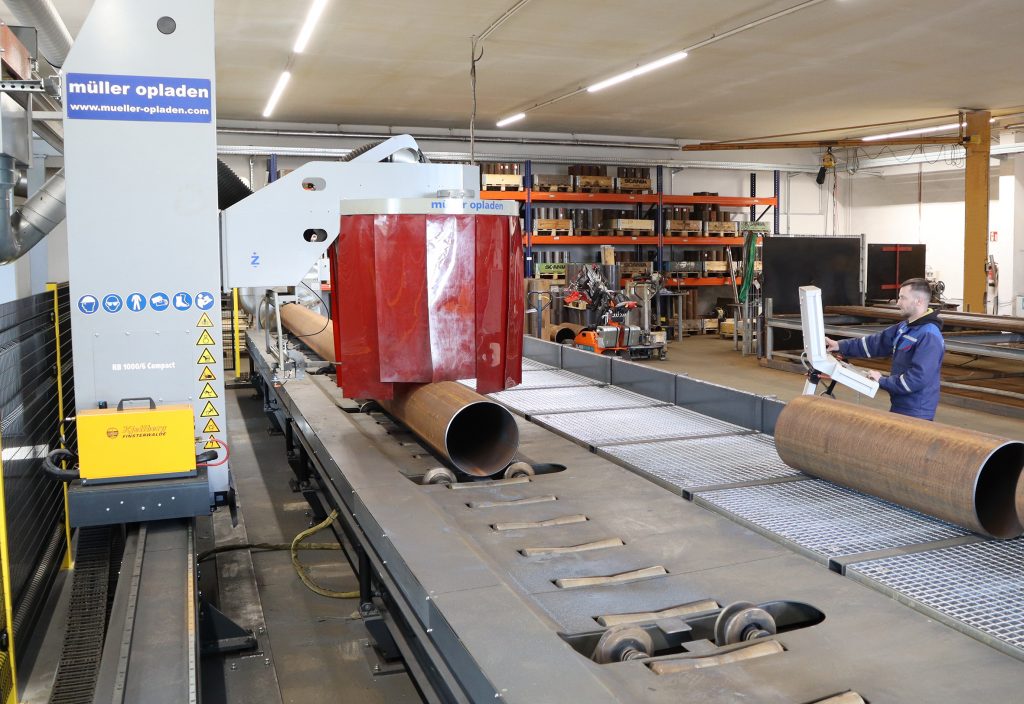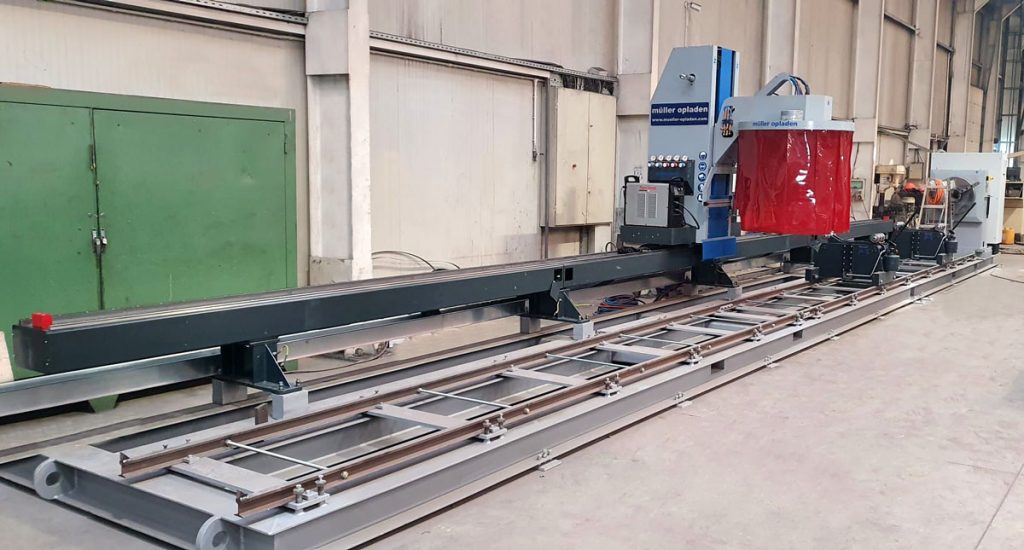Cutting production time to under 2 minutes
To optimize its production chain, a manufacturer of drive shafts was looking for a welding system for cost-effectively producing one-off items as well as small series. He wanted the system to weld both joints to the connecting tube. Also demanded were the accurate positioning of the workpieces, pressing, seam tracking, marking the finished shaft and the documentation of the welding results. All this was coupled with a request for data storage to enable recurring parts to be reproduced more or less at the press of the button. For this application, specialist MÜLLER OPLADEN has developed a forward-looking system that impresses with its ingenious handling and modern CMT welding process. More The experts from MÜLLER OPLADEN developed a forward-looking strategy for this: The new welding system was designed for tube diameters of 70 to 180 mm and component lengths of 900 to 3,000 mm for the welding of tubes or shafts with various joints.
CMT welding with enhanced droplet detachment
CMT welding has been chosen as the welding method, a subset of gas metal arc welding with a new, improved method of droplet detachment. In addition to a pulsed welding current (pulse welding), the weld wire is additionally moved back and forth at high frequency. Thanks to the controlled current supply and the supportive effect of wire movement during material transfer, very little heat is introduced into the base metal.
Efficient handling for superlative welding results
The welding system is mounted on a sturdy base frame with a fixed drive station and a vice adjustable to component length. Both units are equipped with replaceable flange adaptors and support prisms for firmly positioning the component. This ensures that the holes of the joints match up and the joints are centrically aligned with the machine for pressing. The tubes are placed on two self-centering steady rests and automatically aligned with the center of the rotational axis. The steady rests are manually displaceable on the base frame and are slid by the operator to the required working position when the tube is mounted. An electric motor positions the vice for the component-specific length. After insertion of the tube and feed of the two joints, a hydraulic clamping system presses the parts together. The two undercarriages for the welding equipment each consist of 3 linear slides for the automatic positioning of the welding torch in relation to the workpiece. For seam tracking, the lasers have been integrated in addition to the welding torches. The pneumatic needle embosser for marking the finished component is mounted on a third undercarriage.
Rapid production in under 2 minutes
Existing datasets are read-in by a bar code scanner, and new components for welding are entered in the machine program. The customer’s work scheduling department supplies the order-related data and information on settings to the system. On the basis of these data, the machine automatically adopts the predefined positions. Set-up to different component sizes is thus reduced to a minimum. The result is certainly impressive. By optimizing work processes and reducing set-up time, an NG54 component, for example, can be welded in less than 2 minutes on the MÜLLER OPLADEN system.





